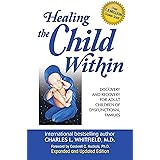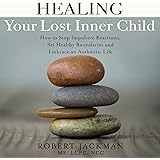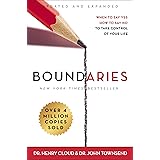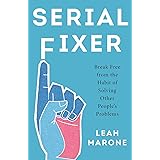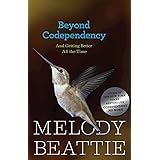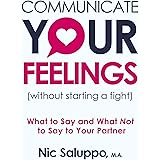The journey through addiction often begins quietly. Many individuals find themselves caught in a struggle they never anticipated. In the accompanying video, Austin Hamilton bravely shares his experience with **sex and pornography addiction**. He highlights a profound truth: sometimes, it feels like pornography finds you, rather than the other way around. His story offers a powerful look into the path of recovery.
Austin describes a period of feeling like a “shell of a person.” He realized an internal void drove his destructive behaviors. This deep yearning often underpins various addictions. His candid account provides insights for anyone grappling with similar issues. It illuminates the often-hidden facets of these struggles.
The Unexpected Onset of Pornography Addiction
For many, exposure to pornography happens early. Austin Hamilton recounts his first encounter around age 10. This was in 1995. His parents had early internet access. This unfettered access opened a new world. The internet was still a new frontier then.
He observed that “porn finds them.” This can occur through innocent exploration. Accidental clicks or pop-ups are common. The internet’s vastness makes it easily accessible. Free content is also widely available.
Imagine if a curious child stumbled upon content. That content could slowly reshape their understanding. The line between harmless curiosity and problematic engagement blurs. This progression can be insidious. It often goes unnoticed for years.
From Pleasure to Problematic Patterns
Identifying the shift from pleasure to problematic use is challenging. Austin himself did not realize his issue was an addiction until adulthood. It took years to apply that label. Many individuals share this delayed realization.
The addiction cycle can be subtle. It often starts as a coping mechanism. It provides an escape from discomfort. Over time, it becomes compulsive. Control over the behavior diminishes.
Austin uses a simple yet profound set of questions. “Have you tried stopping? Can you stop? Have you been successful at stopping?” Answering these questions honestly reveals much. They help determine if the behavior is truly an addiction. Many men struggle with this self-assessment.
Beyond the Behavior: Understanding the “Hole in the Heart”
Austin’s profound insight points to a deeper truth. His addiction was not just about sex or pornography. It was about filling “a hole in my heart.” This void drove many unhealthy behaviors. It created a sense of emptiness within him.
Addiction often serves as a substitute. It tries to satisfy unmet emotional needs. These needs might include love, belonging, or self-worth. The temporary high offers an illusion of fulfillment. This feeling never lasts.
He describes feeling like “a shell of a person.” He was wandering through life pretending. Everything seemed fine on the surface. Yet, deep down, he was broken. This internal conflict is a hallmark of many addictions. It drives individuals to seek change.
The Search for True Self-Worth
Austin’s initial career path highlighted his struggle. He sold a product he disliked. He worked with people he did not like. His goal was merely to impress others. He sought external validation. This pursuit proved deeply unsatisfying.
True healing begins with self-love. It involves loving those around you. This shift in focus is transformative. It moves from external gain to internal peace. Many find this path challenging but necessary.
His recovery involved extensive healing work. He engaged in therapy and coaching. Experiential workshops also played a role. These diverse approaches helped him. They addressed the root causes of his pain.
The Devastating Ripple Effect on Relationships
Addictions like **pornography addiction** profoundly damage relationships. Deceit and hiding become central to the addict’s life. Austin confesses to being unfaithful in his marriage. This behavior started early in his marriage. It continued for a period of time.
He kept this secret for years. The weight of this secret was immense. It slowly “killed” him inside. Hiding creates a chasm between partners. Trust erodes with each concealed act.
Austin described being nervous about his wife finding his phone. This fear is common among those struggling. The constant anxiety impacts daily interactions. It fosters an environment of distrust.
Rebuilding Trust and Acknowledging Pain
The impact extended beyond infidelity. Austin exhibited a “contemptuous way of being.” He believed he was better than others. This attitude affected his wife. She felt she was “not good enough.”
He recalled his behavior with their first child. He tried to do everything. This was driven by his own hurt. He wanted to prove his worth. This inadvertently robbed his wife of mothering moments. It created lost family experiences.
Reconciliation requires grieving what was lost. Both partners must name their pain. Austin and his wife are still unpacking these issues. This ongoing process is vital for healing. It allows for mutual understanding.
Pathways to Healing: Beyond “Just Stop”
Simply telling someone to “stop looking at porn” rarely works. This approach fails to address underlying issues. It does not replace the behavior with anything positive. Austin emphasizes this critical point. Recovery requires more than just abstinence.
Without replacement behaviors, addiction often returns. Or it shifts to a different form. Imagine trying to remove a deeply rooted tree. If you only cut the branches, the roots remain. The tree will grow back, or another one will emerge.
Austin uses a powerful analogy: “Which way is your sword pointing?” Engaging in addictive behaviors attacks one’s family. Protecting family means facing the addiction head-on. It involves intentional action and redirection.
The Power of Disclosure and Facing Shame
Disclosure is a crucial, yet terrifying, step. It means revealing secrets to a trusted person. This could be a spouse, friend, or therapist. Bringing hidden behaviors to light is vital for healing. Shame thrives in secrecy. It festers and eats away at individuals.
Austin disclosed his infidelity to his wife. She was eight months pregnant at the time. Even his therapist questioned the timing. He did it anyway, and they survived. This act was daunting but necessary. It began their joint healing journey.
Disclosure exposes vulnerabilities. It allows shame to dissipate. It invites support and accountability. This step provides a foundation. It helps build a new life free from secrets. It confronts the core of **sex addiction** directly.
Confronting Past Trauma and Finding Self-Love
Austin’s personal journey of healing led him back to his childhood. He realized his mother died when he was five. This profound loss was largely unaddressed. He thought it had not affected him. This belief was a defense mechanism.
His therapist encouraged him to “pretend like you remember.” This exercise helped connect him to his past. He reviewed old pictures and videos. He spoke with relatives who knew his mother. These conversations filled in critical gaps. They brought peace to his story.
He learned his mother loved him deeply. This discovery addressed his core question: “Will I be loved?” This underlying human need often drives addictive behaviors. Connecting with his past helped him understand his present.
The Legacy of Love and Its Healing Power
Austin’s mother, Nancy Jean Tangan Hamilton, was Miss North Dakota in 1970. She was a musician, pilot, and horse rider. Her life ended tragically in 1990. She died in a plane crash. This early trauma deeply impacted Austin.
Understanding this loss was key. It helped him connect to his acting out. It linked to his unfaithfulness. He saw a direct line to his past pain. This realization provided immense clarity.
Watching old videos of his mother gave him proof of her love. This tangible evidence was healing. It showed him he was loved. This self-discovery fosters self-love. It helps fill that “hole in the heart.” Many individuals find this vital for sustained **sex and pornography addiction** recovery.



